Car Sales
Reasonably Priced Hybrid Vehicles (Kia-Merc)
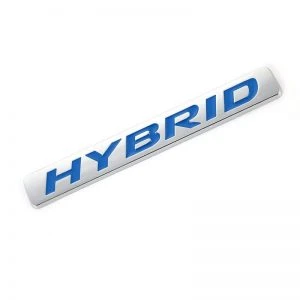 In-between stages can sometimes get tricky. The next set of sit-ups before truly hitting your peak fitness regime. That gap year before study, or the six months prior to the new job contract starting. What about the EV world? We’re not capable of running a full fleet of EV cars yet, but maybe there’s an in-between vehicle that ticks all the right boxes before we go fully electric.
In-between stages can sometimes get tricky. The next set of sit-ups before truly hitting your peak fitness regime. That gap year before study, or the six months prior to the new job contract starting. What about the EV world? We’re not capable of running a full fleet of EV cars yet, but maybe there’s an in-between vehicle that ticks all the right boxes before we go fully electric.
The truth is that the new hybrid vehicles are the best cars for this moment in time. They deliver the very best low fuel consumption figures and will also try to run pure electric as much of the time as is practical or possible.
Hybrids are great vehicles, usually well-priced, thus perfect for softening the blow to the wallet – there are some hideously expensive EVs available. Most desirable new EVs have price tags that, for most of us, will be well beyond our budget. So what hybrid vehicles are on the market for reasonable money? How much will they set you back when you buy new? And what sort of fuel consumption can you expect? Let’s have a look and see (Kia-Merc)…

Kia Niro Hybrid S
The Kia Niro comes in regular hybrid, plug-in PHEV hybrid, and also pure electric (EV) form. Hybrid variants of this small SUV use a 77 kW/147 Nm 1.6-litre ULP engine that is mated to a 44.5 kW electric motor. The PHEV version can run in EV mode for around 58 km, while the pure EV model has a 150 kW/395 Nm motor and a 455 km WLTP (World harmonised Light vehicle Testing Procedure) range. All variants are available in regular or Sport form – the Sport model adding more technology and luxury such as Apple CarPlay/Android Auto, climate control and part-leather seat trim, as well as extra safety in the form of blind spot monitoring, rear parking sensors and rear cross traffic alert. Drive away in one of these from around $45k. Boot space is 382 litres for the regular hybrid, while the PHEV drops to 324 litres.
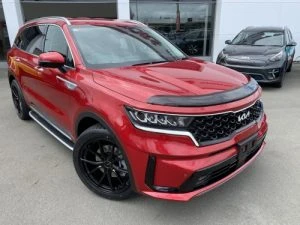
Kia Sorento HEV GT-Line and PHEV GT-Line
Drive away from in a HEV Sorento for around $73k or a PHEV Sorento for around $88k. Being a spacious SUV, the Sorento is a very practical companion for the family. The HEV model runs with a 1.6 litre Turbo engine and an electric motor that puts out a healthy combine output of 169kW. The 6-speed auto is smooth and well-mapped. Expect a combined fuel consumption of around 5.5 litres/100 km. In PHEV form, the Sorento has 195 kW, Kia indicating a combined fuel consumption of 1.6 litres/100 km is possible, though it will likely be more than this in a real world commute. The 7-seat Kia Sorento SUV won the 2021 car sales Best Family SUV award. Festooned with sensors, cameras and digital screens, it can even park itself without anyone inside. Autonomous emergency braking, adaptive cruise control, blind-spot monitoring and rear cross-traffic collision avoidance are all standard. The roomy cabin is enhanced by a boot that has over 600 litres, and when all-seats are folded, a whopping 2000 litres is possible.
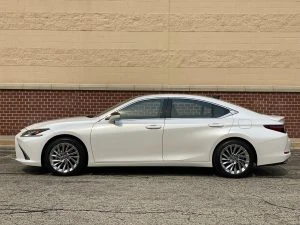
Lexus ES 300h
One of the most luxurious hybrid sedans you can buy – let alone hybrid vehicles on the market – for under $70k new for the Luxury version or $90k new for the Sports Luxury version, this stylish car can be yours. Toyota indicate that a combined city/highway run can be as low as 4.8 litres/100 km. A combined 160 kW of power and five-star safety, what more could you want? Boot space is 454 litres, and the 0-100 km/h takes around 8.5 seconds.

Lexus UX 250h SUV
The company’s first EV, the UX 300e has a 150 kW/300 Nm FWD electric powertrain and a 54.3 kW/h battery pack, the Lexus UX 300e claims a 360 km range. But it is the Lexus UX 250h SUV Hybrid with the 2.0-litre 131 kW ULP regular hybrid engine that we’re particularly interested in here, which is available in Luxury, Crafted Edition, Sports Luxury and F Sport guise. The Luxury Lexus UX 250h version can be had for well under $60k, a very reasonably-priced luxury machine all things considered. These are five-star safe, FWD, extremely reliable, and very comfortable to drive. Toyota indicate around 4.5 litres/100 km for a combined highway/city cycle for hybrid versions. Boot space is 438 litres.
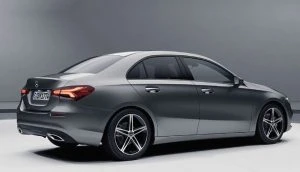
Mercedes Benz A250e Sedan and Hatch
Immensely low running costs can be had for this plug-in hybrid. If everything suits the PHEV commute, then Mercedes Benz indicates you could see as low as 1.6 litres/100 km on a combined cycle. Luxurious, safe, and fun to drive, these can be had for under $80k. A 1.3-litre Turbo ULP engine with a plug-in hybrid combo that produces 160 kW max through its smooth 8-speed automatic FWD system. The 2022 A-Class A250e runs the 0-100 km/h dash in less than 7 seconds, providing well for passengers and their luggage, driving with the poise and comfort that are hallmarks of the brand. Safety, quality, comfort, and premium equipment levels are all up to expected Mercedes Benz standards. Boot space is 315 litres for the Sedan and 310 litres for the Hatch.
Be an in-betweener and gain some of the benefits.
Reasonably Priced Hybrid Vehicles (A-H)

In-between stages can sometimes get tricky. The next set of sit-ups before truly hitting your peak fitness regime. That gap year before study, or the six months prior to the new job contract starting. What about the EV world? We’re not capable of running a full fleet of EV cars yet, but maybe there’s an in-between vehicle that ticks all the right boxes before we go fully electric.
The truth is that the new hybrid vehicles are the best cars for this moment in time. They deliver the very best low fuel consumption figures and will also try to run pure electric as much of the time as is practical or possible.
Hybrids are great vehicles, usually well-priced, thus perfect for softening the blow to the wallet – there are some hideously expensive EVs available. Most desirable new EVs have price tags that, for most of us, will be well beyond our budget. So what hybrid vehicles are on the market for reasonable money? How much will they set you back when you buy new? And what sort of fuel consumption can you expect? Let’s have a look and see…
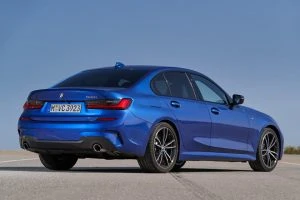
BMW 330e Sedan Hybrid Sedan
Drive away from around $85k in your new BMW 330e Hybrid sedan, where a claimed combined fuel consumption of around 5.6 litres/100 km combined with 215 kW provides plenty of spirited driving (0-100 km/h in around 6 seconds). Comfort, safety and all the new technology is on-board this neat 3 Series Hybrid Sedan package. 375 litres of boot space is present.
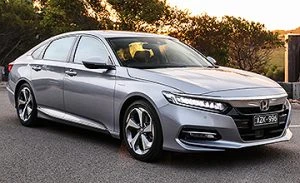
Honda Accord VTi-LX Hybrid Sedan
Drive away in a new Honda Accord Hybrid for around $61k, and you get a wonderful 2.0-litre petrol and electronic combo that serves up 158 kW of power running through a 1-speed CVT FWD set-up. This is a very comfortable car with plenty of space in the cabin, and you get all the latest technology and safety. It is fun to drive, with the 0-100 km/h sprint taking around 8 seconds. Honda indicates that you can expect around 5.0 litres/100 km for a combined fuel consumption figure. 473 litres of boot space is present.

Honda HR-V e:HEV L
Wanting a new small SUV with Hybrid technology? Then Honda’s little HR-V is a beauty. Drive away in a new Honda HR-V e from around $45k, and it will boast a smooth 1.5-litre petrol and electronic combo that serves up 96 kW of power running through a 1-speed CVT FWD set-up. Honda suggests we can expect a combined fuel consumption of around 4.3 litres/100 km. 319 litres of boot space is present.
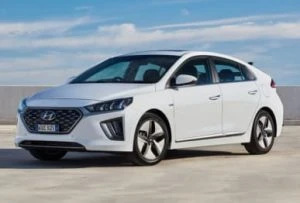
Hyundai IONIQ Hybrid Premium Fastback
Drive away from around $46k. With its neat little Fastback design, the 1.6-litre ULP engine combines with a small electric motor to put out a sprightly 104 kW of power. This Hybrid set-up runs a more conventional 6-speed automatic FWD, and it is a smooth, comfortable vehicle to drive. Undercutting competitors such as the Toyota Prius and Renault Zoe, Hyundai’s IONIQ comes with plenty of premium features like autonomous emergency braking, an 8-year battery warranty and an attractive capped-price servicing deal. The regular hybrid version is quoted at having a fuel consumption figure as low as 3.4 litres/100 km, while the plug-in version was quoted at an astonishing 1.1 litres/100 km. Real world figures will be a bit more, I’m sure, but. Boot space is 443 litres.
Be an in-betweener and gain some of the benefits. Take a look at the next blog list of Hybrid vehicles available (Kia-Merc).
Is there Still Space in the Market for Sedans?
Like a slow motion replay, the scene has been unfolding for some time. In fact, go back a couple of years and the writing was on the wall. Australians are obsessed with SUVs. But it’s not just here either, with many other countries following the trend, none more evident than the United States and China.
It has reached the point now where local SUV sales are far and away outperforming sedans, and have blown past 50% of all new car sales. On the one hand, the rise of commercial vehicles like utes has also helped to skew the numbers away from sedans, but the prominence of the SUV category is no statistical anomaly.
With such an evident trend appearing to be set in stone, it does raise questions over the future viability of the sedan format. In particular, will sedans still have a place in the market as SUV sales soar?

An evolving landscape
Cars have always been redefined by the technological progress that accompanies them. That doesn’t just extend to what’s under the bonnet either, nor what’s inside the cabin. It also extends to the shape of the body. We’ve seen an evolution as far as new formats like crossovers, liftbacks and many other identities.
In many respects, there is no reason to believe this won’t continue as means to continue fuelling the sedan market. Design changes may be subtle, but incorporating the feedback we’ve come to expect from those who prefer things like superior room, ride height, visibility and off-road versatility that comes with an SUV. Not to mention, with electrification and autonomy on the way, designs will inherently continue to transform, gradually shifting our taste in vehicles too.

The value proposition will dictate future sales
For now, sedans are still posting sales numbers that are nothing to sneeze at. Sure, they may be declining, but the choice for SUV models has risen astronomically to provide more options than ever before. Motorists’ preferences may have changed but in some ways, historical data may have been otherwise pointed to higher levels of SUV sales – and lower sedan sales – had drivers been afforded more choice at an earlier stage.
It is also a challenge that manufacturers should embrace. They will not only be faced with the task of streamlining their sedan range – as many have done already – but also going about reinvigorating a value proposition into the category to drive sales.
SUV sales may offer auto-makers fatter margins, however their higher prices and at-times polarising looks will still be a barrier to pushing sedans out of the market. So if sedans are then here to stay, car manufacturers must add value in the form of new technology, amenity, efficiency and performance to compete for the shrinking pool of buyers. And it’s many of these criteria that sedans have historically held the upper hand.
Top 10 New Vehicles Sold March 2022

There are still a reasonable number of new cars being sold in Australia, when you can get them! For the second year running, new car sales figures have been heavily impacted by the COVID-19 pandemic. While the 2020 lockdowns stopped production and prevented sales, in 2021 it was really the global supply chain problems that caused the biggest headaches for ensuring manufacturers had all the bits to make up an entire car to sell. Most notably, it was the availability of semiconductors that caused the greatest complications, even to the point where all car manufacturers – it didn’t matter what brand – had to halt their production lines at various times.
Consumers have seen this effect playing out with the low stock of new cars at dealerships across the country, as well as much higher prices for used vehicles. Getting a handle on the new cars that people have actually bought has been tricky at times, but we can now give you an update on the 10 best-selling cars in Australia for the March 2022 sales results.
While the Toyota Hilux still keeps its position as Australia’s best-selling new car (and favourite ute overall), overall new car sales for March 2022 have stayed relatively stable across the board and across Australia. Data from the Federal Chamber of Automotive Industries (FCAI) has unveiled an overall monthly sale of 101,233 units for new vehicle sales across Australia for March. That’s still a fair few!
Several favourite vehicles remain at the top of the list, including 4 Toyota models (Hilux, RAV4, Prado and Corolla) making the top 10. An interesting bump in sales was seen with the number of Tesla Model 3 cars being sold. There were enough Tesla Model 3 sales to see it being Australia’s best-selling electric vehicle (EV) brand as well as making the top 10.
Australia’s top 10 best-selling cars for March 2022 were:
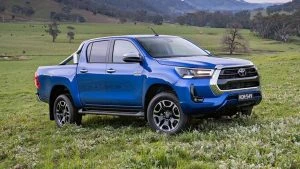
Number 1, Toyota Hilux

Number 2, Toyota RAV4

Number 3, Mitsubishi Triton
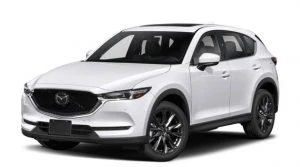
Number 4, Mazda CX-5
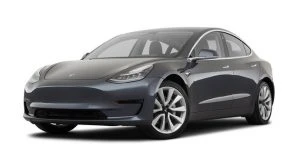
Number 5, Tesla Model 3
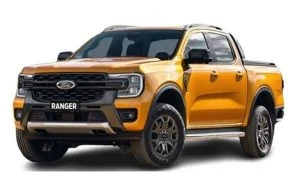
Number 6, Ford Ranger
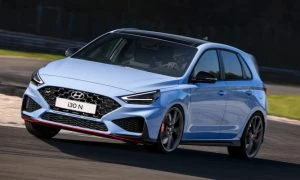
Number 7, Hyundai i30
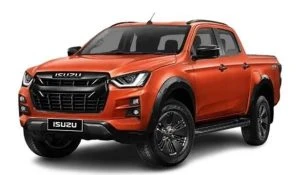
Number 8, Isuzu D Max
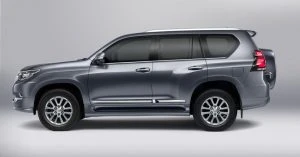
Number 9, Toyota Prado
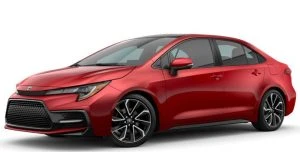
Number 10, Toyota Corolla
Consumer inquiries and demand for new cars remains strong in Australia, though manufacturers are working hard to match this demand with the actual supply of products, particularly as they continue to recover from all the COVID-19 upheaval and shutdowns and the ongoing global semiconductor shortage.
FCAI Chief Executive Tony Weber suggests that Australians are purchasing vehicles with zero- and low-emissions in greater numbers. This purchasing also includes more hybrid vehicles being sold.